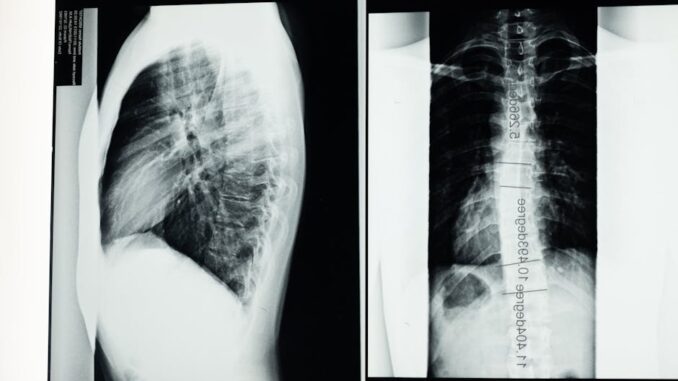
Summary
Rad AI, a leading generative AI radiology workflow company, has raised $60 million in a Series C funding round, boosting its valuation to $525 million. This investment will accelerate the development and deployment of AI-powered tools designed to streamline radiology workflows, improve patient care, and reduce radiologist burnout. The company’s innovative solutions are transforming the field of radiology by automating tasks such as report generation, impression creation, and follow-up care management.
Main Story
Okay, so, you know how medical tech is always changing? Well, the latest buzz is all about AI, especially in radiology. It’s pretty wild, actually. Rad AI, a company based in California, is really making waves in this space. They just snagged a whopping $60 million in Series C funding. That brings their total to over $140 million, and get this, their valuation is now $525 million! I mean, that kind of money just screams confidence, doesn’t it?
This latest funding round, spearheaded by Transformation Capital, really shows how much people believe in what Rad AI’s doing and the potential of their tech.
What’s their deal exactly? Well, they’ve developed a suite of AI tools designed to tackle some big issues for radiologists; think burnout, crazy workloads, and the pile of administrative stuff they have to deal with. You’ve probably heard, many are feeling completely swamped. These tools leverage generative AI to take over the time-consuming stuff, freeing up the docs to focus on what truly matters: accurate diagnoses and, ultimately, patient care. For example their tool, Rad AI Omni Impressions, creates report summaries after the radiologist dictates their findings – it’s a big time saver, and it even learns the radiologist’s unique way of writing. Pretty neat, right?
Another key product is Rad AI Continuity, which uses AI to flag important findings like potential cancers and it even automates follow-up procedures. Think of all the time spent on paperwork. That can be automated, too! This is all about ensuring that critical findings are addressed right away, improving outcomes and, at the same time, reducing potential legal liability for hospitals. It’s a win-win for everyone. Furthermore, Rad AI Reporting automates, wait for it, up to 90% of dictated words! Yeah, 90%! It cuts down on report creation time drastically which helps radiologists to focus on other important tasks, and, equally important reduces fatigue, which we all know, is a real problem for them.
Honestly, it’s kinda crazy how quickly they’ve been adopted. More than a third of US health systems and radiology practices are now using their tech. That says something. Their commitment to innovation has really put them on the map as one of the most exciting healthcare AI companies around. And, naturally, this new round of funding will help them grow even more. I remember back when I interned at a hospital, we were all pulling all-nighters just writing up patient notes. If only we had this back then!
The demand for imaging is only going to go up, and generative AI looks like a viable path to boost productivity and enhance patient care. Rad AI is definitely at the forefront of this, and their advancements are bound to change how radiologists work and how patients receive care. It’s all part of a bigger push to integrate AI into healthcare, which promises to improve efficiency and accuracy, across many specialities. Plus, this progress also goes hand-in-hand with developments in things like telehealth and gene editing, which all promise to change healthcare as we know it. It’s a really exciting time, isn’t it? You know, sometimes you do wonder what the next big thing will be. But, for now, this feels like it.


The reported 90% automation of dictated words is quite impressive! It’s fascinating how AI is being leveraged to tackle significant workload issues, potentially revolutionizing radiologist workflows and patient care. I’d be curious to know more about the impact on diagnostic accuracy.
Thanks for highlighting that 90% automation figure! It really showcases the potential for AI to handle repetitive tasks. I agree, the impact on diagnostic accuracy is a key area to explore as this technology evolves. It’s exciting to think about what’s next for AI in radiology.
Editor: MedTechNews.Uk
Thank you to our Sponsor Esdebe – https://esdebe.com
The mention of automating follow-up procedures raises an interesting point; how does the system ensure appropriate contextual nuances in different patient cases are incorporated in those follow ups?
That’s a crucial question! The nuances of patient cases are definitely paramount. I believe Rad AI uses sophisticated machine learning algorithms to learn from vast datasets of medical records, and the system can be fine tuned to handle specific needs. The key is the ongoing training and adaptation of the AI, ensuring patient-specific context is always considered.
Editor: MedTechNews.Uk
Thank you to our Sponsor Esdebe – https://esdebe.com
The scale of adoption, with over a third of US health systems using the technology, suggests a significant perceived benefit. It would be interesting to examine data on user satisfaction and real-world impact on radiologist workflows beyond the 90% automation figure.